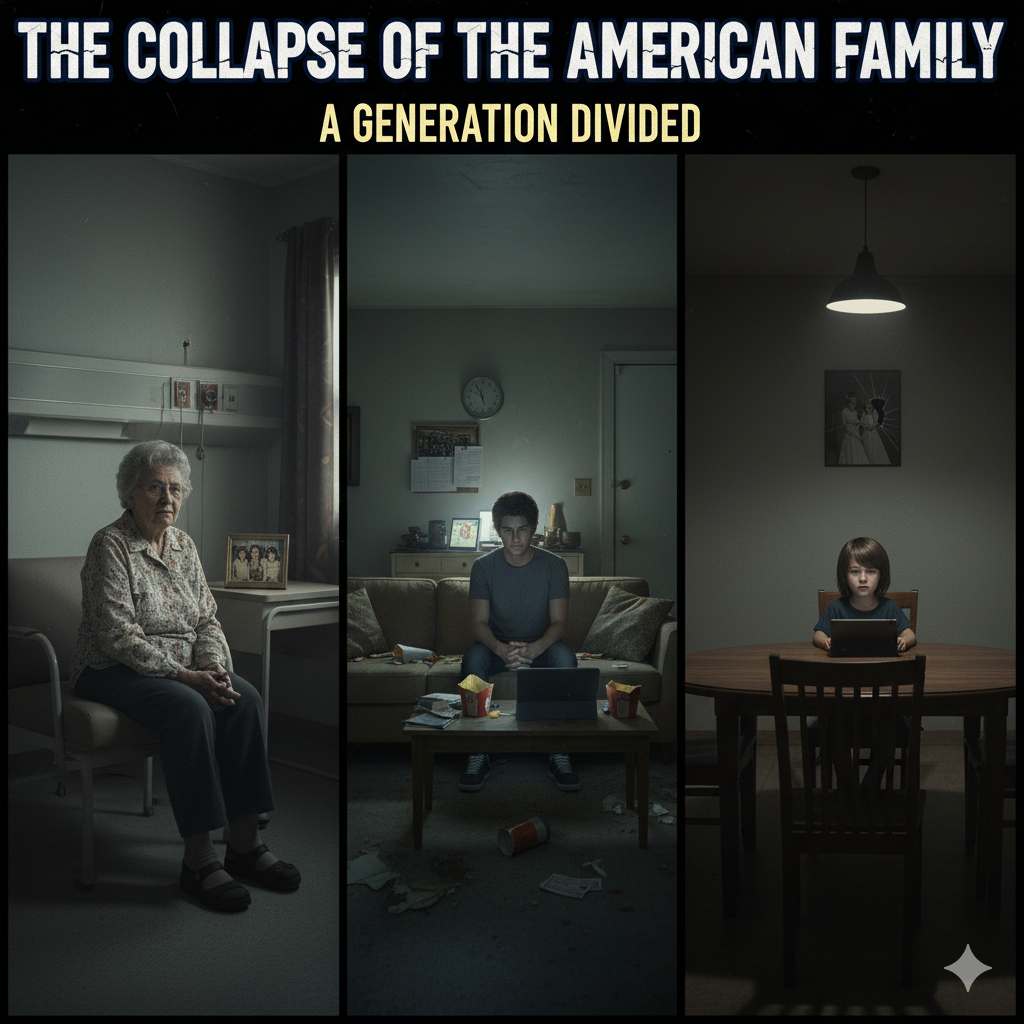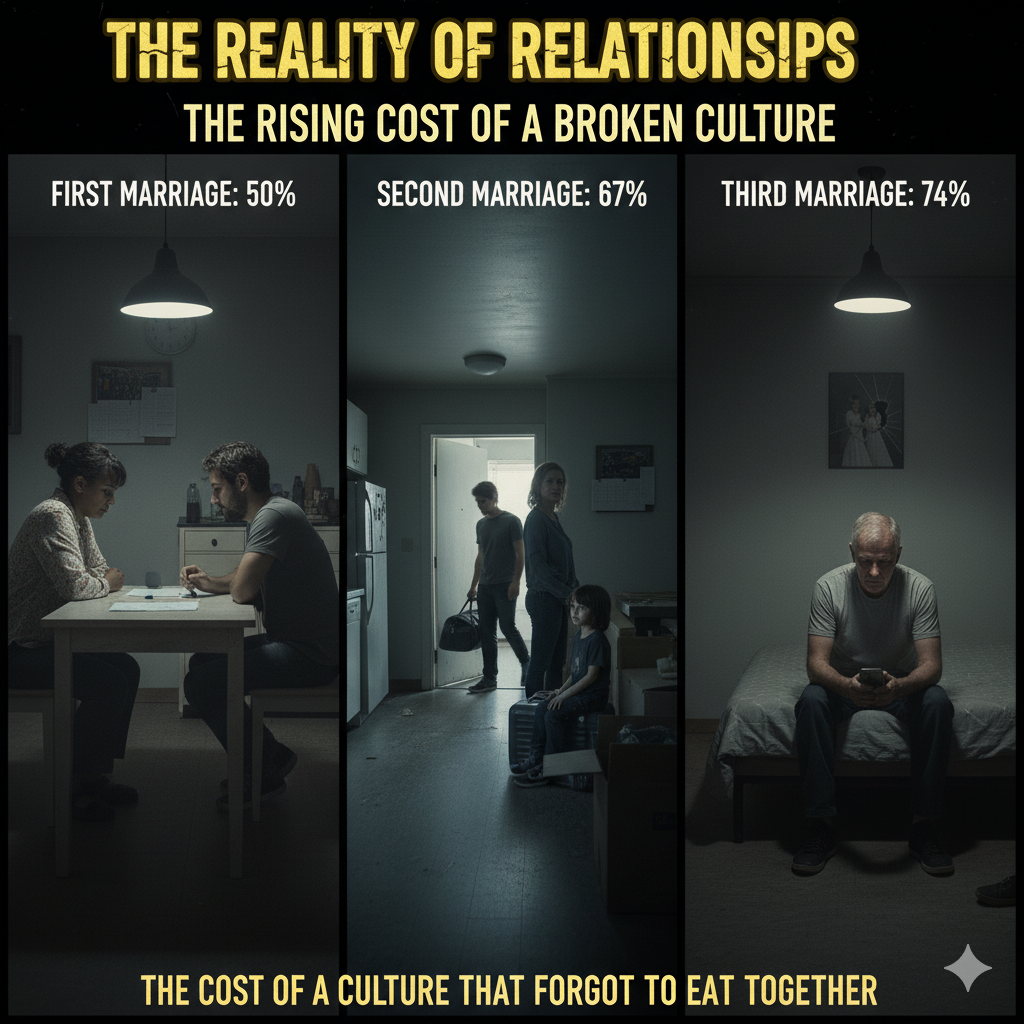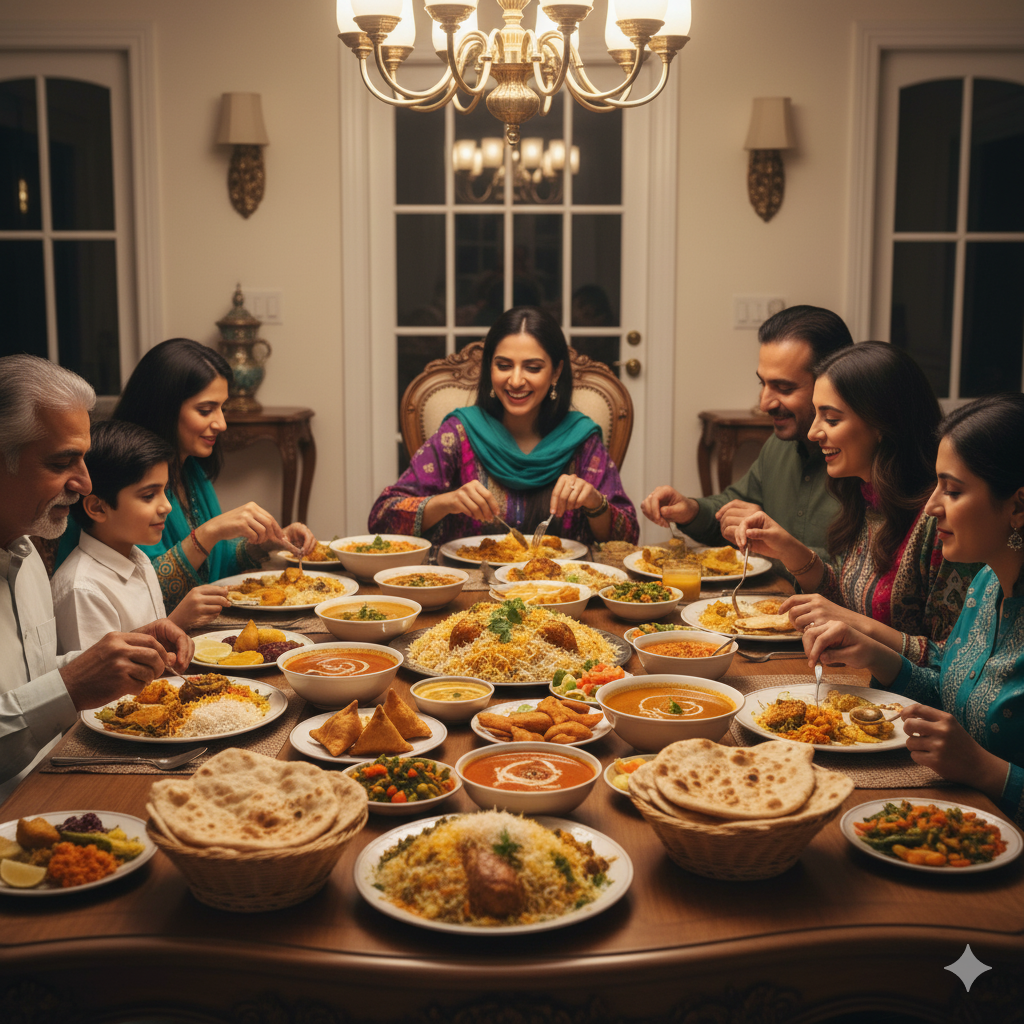The Silent Kitchen — A Cultural Warning from America to India
1. When the Silent Kitchen Falls Silent, Families Begin to Fade
Did you ever imagine that a quiet kitchen could rewrite the story of an entire nation?
It happened once — in America.
And if India doesn’t learn from it soon, history may repeat itself.
2. The 1970s: When America Still eat Together
There was a time when American families truly lived as one.
Grandparents, parents, and children shared not just homes — but hearts.
Every evening, the aroma of freshly cooked food filled the air.
Dinner tables were places of laughter, stories, and unspoken love.
Food was more than nourishment — it was a bridge between generations.

3. The Great Shift of the 1980s
Then came the 1980s — the decade that changed everything.
Fast food chains, takeaways, and ready-to-eat meals took over the traditional kitchen.
Parents got busier. Children turned to pizzas and burgers instead of family dinners.
The hum of conversation was replaced by the buzz of televisions.
Slowly, the kitchen — once the heart of every home — went silent.
Related Topics: Exciting Visa-Free Countries for Indian Passport 2025
Amazing Canada eTA vs Visitor Visa 2025: Comparison Guide
4. Warnings That Fell on Deaf Ears
Sociologists and cultural thinkers tried to warn America:
“If you outsource your kitchen to corporations and your family care to governments, your families will fall apart.”
But no one paid attention.
The warnings were dismissed as nostalgia — until the damage became visible.
5. The Collapse of Traditional Family Life
In 1971, 71% of American households had traditional family structures — parents and children living together.
Today, that number has dropped to just 20%.
What remains?
Elders in nursing homes.
Youth living alone in rented apartments.
Marriages breaking faster than they begin.
Children growing up in loneliness, surrounded by gadgets instead of grandparents.

6. The Reality of Relationships
The statistics tell a heartbreaking story:
- Divorce rate for first marriages: 50%
- Second marriages: 67%
- Third marriages: 74%
This isn’t coincidence — it’s the cost of a culture that forgot to eat together.
7. The Hidden Power of Home-Cooked Food
Home-cooked meals carry more than calories. They carry memories.
They carry the soft touch of a mother, the wisdom of a grandfather,
the warmth of a grandmother’s stories, and the laughter of siblings.
But now, food comes from apps — Swiggy, Zomato, and countless delivery bags.
The smell of fresh rotis is replaced by plastic containers.
The kitchen dies, and the house becomes just four walls — not a home.

8. The Health Fallout: When Food Became Fast
America’s fast-food revolution led to a silent health epidemic:
- Rising obesity rates
- Alarming diabetes levels
- Heart diseases at younger ages
The health industry boomed — not because people got better,
but because they got sicker.
9. What Other Cultures Got Right
It doesn’t have to end this way.
Japan still eats together — and enjoys the world’s longest lifespan.
Mediterranean families treat food as sacred — and relationships as lifelong.
In those cultures, the kitchen remains a symbol of love, respect, and health.

10. India’s Turning Point: Don’t Let the Kitchen Die
India now stands at the same crossroads.
Our family dinners are fading.
Our reliance on outside food is rising.
And our screens are replacing real conversation.
If we lose the kitchen, we lose more than a meal — we lose the soul of our homes.
What You Can Do Today
✅ Light your kitchen stove again.
✅ Cook something simple — dal, roti, or your grandmother’s recipe.
✅ Call your family to the table.
✅ Talk, laugh, and eat together.
Because bedrooms make a house,
but kitchens make a family.
Final Thought
Ask yourself this:
“Do you want to build a home — or run a lodge?”
The choice, as always, begins in your kitchen.
Sources:
Pew Research Center – The American Family Today
→ Authoritative source showing U.S. family structure changes and cultural shifts over decades.
World Health Organization – Healthy Diet Fact Sheet
→ Reliable global reference on nutrition, diet habits, and health risks from fast food consumption.



